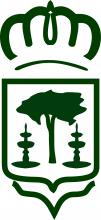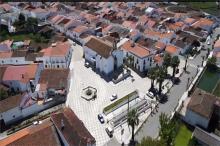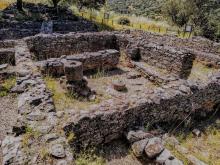The origins of Higuera la Real go back to the existence of a pre-Roman settlement fort known as Castrejón de Capote, located in the Ardila river basin, inhabited between the 5th and 1st centuries BC.
Its strategic position within the networks of ancient communication routes between the Southwest and the Northwest of the peninsula, among other factors, made Capote an attractive place to be occupied since Prehistoric times, being the second half of the 2nd century BC its time of greatest splendor. However, at the beginning of the 1st century BC. C, due to the Roman conquest, the town would suffer a series of attacks that caused its destruction and definitive abandonment.
It is a very old town, without being able to specify exactly the date of its foundation. In medieval times it was conquered around 1247, and after being taken from the Muslims in 1253, it became part of the territory of Seville. Later, Alfonso X "El Sabio" donated to the Order of the Temple the castle of Fregenal, with its town and its district, of which Higuera was a part until the extinction of the Order in 1314, date in which it returned to depend on the Council of Seville.
In the 15th century, with the policy of repopulating the lands conquered from the Muslims, the town experienced a period of economic, social and artistic expansion, of which the parish church of Santa Catalina and the church of San Bartolomé are magnificent examples.
The loss of political powers by the Council of Seville takes place when, by Royal Privilege of Felipe IV, dated in Madrid on July 11, 1633, is granted, in exchange for 8000 ducats, the title of town and the delimitation of the territory corresponding to its municipal area. It is also granted autonomous jurisdiction in civil and criminal matters in the first instance, as well as the category of Royal, which it has held since then.
The aforementioned Privilege of Felipe IV is preserved in the municipal archive.
But this will not mean the total dissociation of Seville. Without going any further, in the military field, Higuera la Real will continue to be included in the General Captaincy of Andalusia.
Its weapons are those that appear on its coat of arms: a fig tree and two fountains, surpassed by a royal crown.
In the 18th century a new territorial division was established in provinces and fiscal parties and Higuera la Real was registered in the Floridablanca census of 1787 as a royalty town, belonging at the same time to the Intendencia and Partido de Sevilla and to the Partido de Fregenal.
At the beginning of the 19th century, the War of Independence was to hit these lands again. The war situation prevented the implementation of new land reforms. Despite the fact that, after the French troops were evacuated from the Peninsula, the Spanish authorities continued with the policy of organizing the territory, it was not until 1833 when, by Royal Decree of 21 November of that year, a final division into provinces was established that has been maintained to the present day. In this final division, Higuera la Real became part of the province of Badajoz, becoming part of the Fregenal de la Sierra judicial party.





